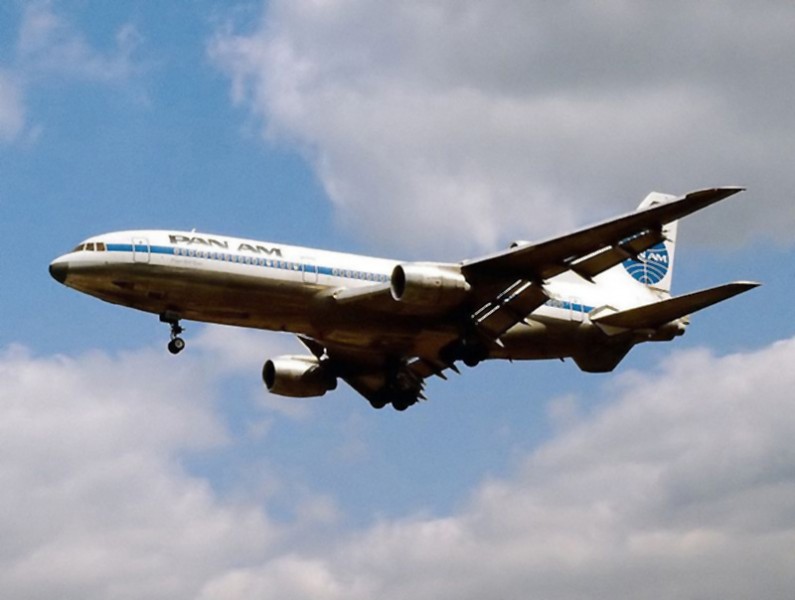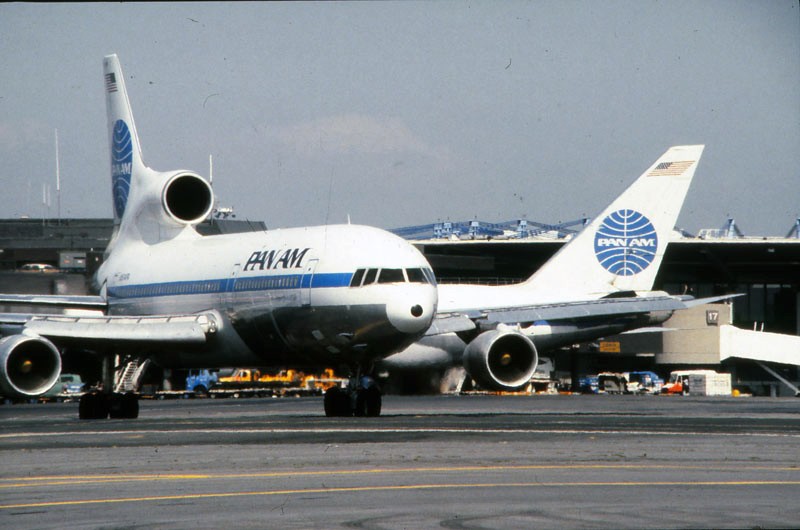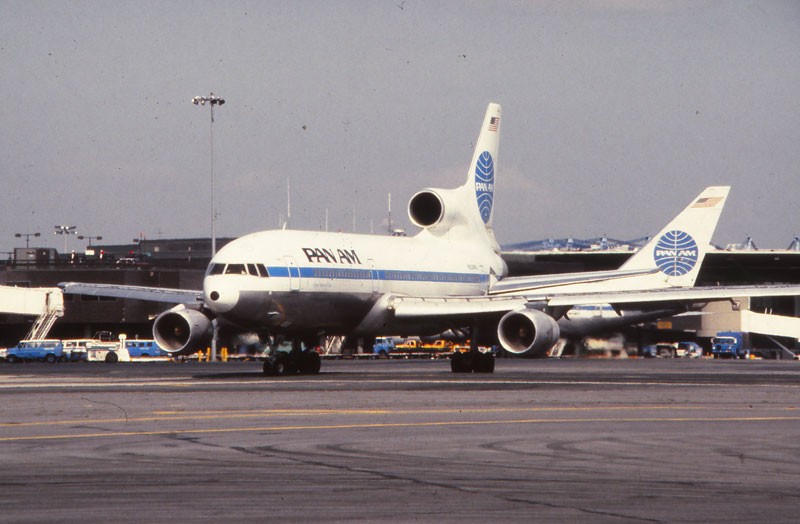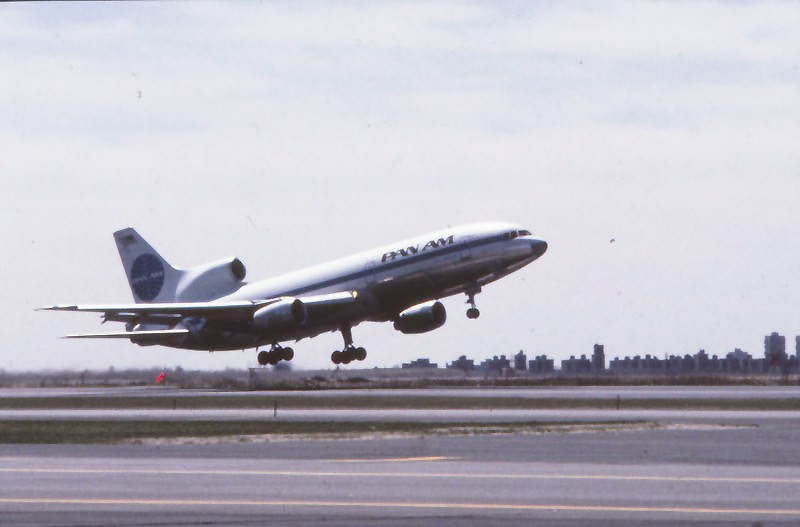The Story of Pan Am's Lockeheed L-1011 TriStar
(from Pan Am: An Airline and Its Aircraft, by R.E.G. Davies, illustrated by Mike Machat. Text and illustrations used here by permission)
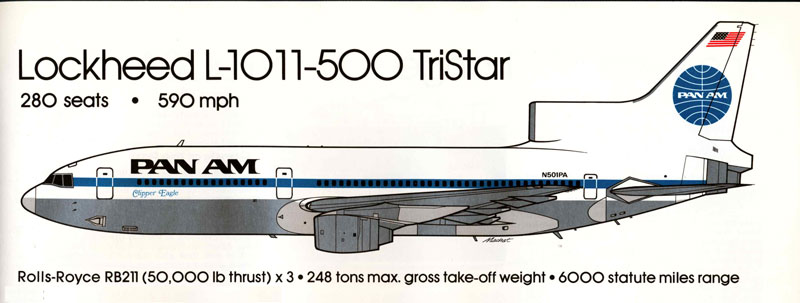
Pan Am Lockheed TriStar by Mike Machat
Traditional Rivalry Renewed
The competition was good while it lasted. Lockheed appeared to have the edge when, in 1967 it first announced its trijet wide-bodied airliner, to return to the commercial business again after it had terminated its turboprop L-188 Electra, program and concentrated on military and space production, notably with the giant C-5A transport. While Douglas followed the rather unexpected customer preference for General Electric as the main engine supplier over the traditional Pratt &Whitney, Lockheed teamed up with Rolls Royce.
With its great production experience, Douglas narrowly won the race for first flight honors. The DC-10 made its maiden flight on 24 October 1970, the L-1011 TriStar on 16 November of the same year. But Douglas pulled ahead, with the DC-10 entering airline service on 5 August 1971, the Tristar on 26 April 1972. Subsequently, both companies experienced setbacks. Lockheed lost ground when Rolls Royce went bankrupt and severely disrupted the TriStar program. Lockheed was saved by the U.S. Senate's approval of the Emergency Loan Guarantee Act (by a margin of one vote) on 2 August 1971. The program survived but Lockheed's competitive stature was badly compromised.
Later, the dice fell against its rival. On 25 May 1979, an American Airlines DC-10-10 crashed spectacularly in full view of a critical audience at the busiest airport in the world, Chicago's O'Hare. Douglas's reputation was in jeopardy for many months, and although it was later exonerated from the vicious charges directed against it, the DC-10 lost many orders to Boeing as a result, and in Pan American's case, may have been one of the factors influencing its choice of the TriStar.
Compromising a Design
Whether by accident or calculated design, Douglas had been able to build a long-range DC-10. While the lighter weight of the TriStar compared with the DC-10 (about ten tons difference) may have given it a slightly superior economic performance, this was more than offset by a critical disadvantage. The DC-10 could be developed by a substantial increase in all-up weight—more than 60 tons. Most of this could be used to advantage by adding enough extra tankage to make the DC-10-30 or the DC-10-40 competitive not only with the TriStar but also with the 747, and 747SP.
In contrast, the TriStar's range could be increased only by a trade - oil, and after much heart-searching this was done. The additional range necessary to turn the Lockheed trijet into a transocean airliner was achieved only by reducing the size so as to lighten the all-up weight, at the same time adding extra tankage in place of payload. Thus the economics of the aircraft were compromised. Lockheed could take some satisfaction of knowing that its launching customer was Pan American, but somehow, the old magic was gone. No longer did the rest of the world follow the Juan Trippe standard. In the event, few airlines followed Pan Am's example, and the so-called long-range TriStar was sold to a mere handful of specialized airlines.

